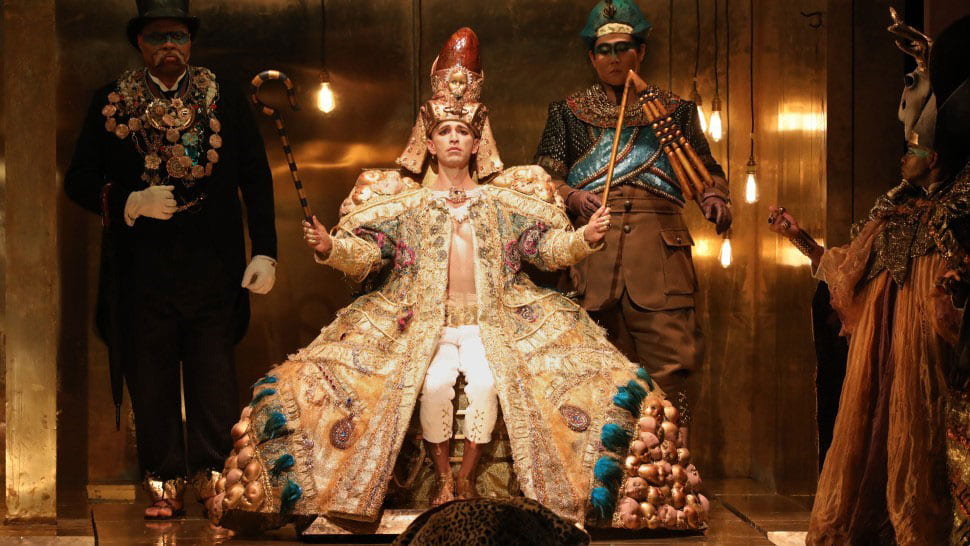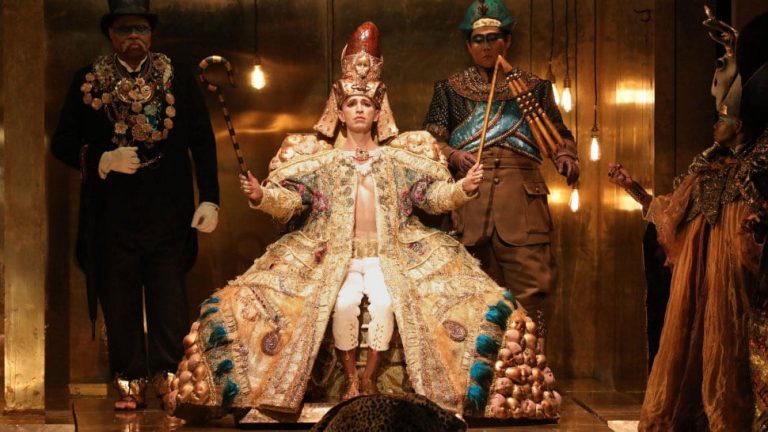From the extravagant and ornate ruffs of Shakespearean times to the futuristic and technologically advanced robot suits of today, the evolution of theater costumes has been a journey filled with innovation and creativity. The way in which performers dress on stage not only reflects the time period and setting of the production, but also plays a crucial role in bringing characters to life. Let us delve into the fascinating world of theater costumes and explore how they have transformed over the years.

– The Influence of Historical Fashion Trends on Theater Costumes
Exploring the rich history of fashion trends and their influence on theater costumes is like taking a journey through time. From elaborate Elizabethan ruffs to futuristic robot suits, the evolution of theater costumes has been a fascinating reflection of the changing times.
Throughout history, theater costumes have not only served a practical purpose of helping actors bring characters to life, but they have also been a visual representation of the societal norms and trends of the time. For example, the extravagant and intricate costumes of the Baroque period reflected the opulence and grandeur of the era, while the simple and practical costumes of the Victorian era reflected the more conservative values of the time.
One of the most interesting aspects of exploring historical fashion trends in theater costumes is seeing how designers have taken inspiration from different eras and incorporated them into modern productions. From the whimsical silhouettes of the Roaring Twenties to the dramatic draping of ancient Greek tunics, theater costumes have continued to evolve and innovate over the years.
As we continue to push the boundaries of fashion and design, it is exciting to see how historical fashion trends will continue to influence theater costumes in the future, creating a unique blend of the old and the new on stage.
– Incorporating Technology and Innovation into Modern Costume Design
When we think of theater costumes, our minds may jump to Shakespearean ruffs or Elizabethan gowns. However, the world of costume design has come a long way since then, especially with the incorporation of technology and innovation.
Costume designers today have access to a wide range of tools and materials that allow them to create truly unique and spectacular costumes that enhance the overall theatrical experience. From 3D printing to LED lighting, the possibilities are endless when it comes to incorporating technology into modern costume design.
One example of this evolution is the use of robotics in costume design. Imagine a robot suit that can transform seamlessly from a human form into a towering robot on stage. This kind of innovation adds a whole new level of excitement and dynamism to theatrical productions, captivating audiences in ways never seen before.
- Balancing Aesthetics and Practicality in Costume Construction
In the world of theater, costume design serves as a crucial element in bringing characters to life on stage. The fusion of aesthetics and practicality in costume construction is a delicate art that has evolved significantly over time. From the elaborate ruffs worn by characters in Shakespearean plays to the futuristic robot suits seen in modern productions, costume designers have continually pushed the boundaries of creativity and innovation.
One of the key challenges in balancing aesthetics and practicality lies in creating costumes that not only look striking on stage but also allow actors the freedom to move and perform comfortably. This often involves using lightweight and flexible materials that can withstand the demands of live performances while still maintaining the desired visual impact. Additionally, attention to detail is essential in ensuring that each costume reflects the character’s personality, time period, and setting.
With advancements in technology and design techniques, costume construction has become more sophisticated than ever before. 3D printing, fiber optics, and other cutting-edge technologies have opened up new possibilities for creating intricate and visually stunning costumes that were once thought impossible. However, even as technology continues to push the boundaries of what is achievable, the fundamental principles of balancing aesthetics and practicality remain at the core of costume design in theater.
– Tips for Creating Show-Stopping Theater Costumes
When it comes to creating show-stopping theater costumes, attention to detail is key. From the intricate ruffs of Elizabethan times to the elaborate robot suits of modern productions, theater costumes have evolved to become works of art in their own right.
One tip for creating standout theater costumes is to research the time period and theme of the production. Understanding the historical context and aesthetic style will help you design costumes that are both authentic and visually striking. Incorporating elements such as period-appropriate fabrics, accessories, and silhouettes can elevate the overall look of the production.
Another tip is to consider the practicality and comfort of the costumes. Actors need to be able to move freely on stage, so it’s essential to design costumes that allow for ease of movement while still capturing the essence of the character. Utilizing lightweight materials, adjustable closures, and hidden pockets can help achieve both functionality and style.
As we take a final bow on the evolution of theater costumes, it is clear that the journey from ruffs to robot suits has been a fascinating one. The transformation of these garments not only reflects the changing times and advancements in technology, but also serves as a testament to the creativity and innovation of costume designers throughout history. From the elaborate designs of the past to the cutting-edge creations of the present, one thing is certain - the magic of theater will always be intertwined with the artistry of costume design. So, next time you attend a performance, take a moment to appreciate the intricate details and brilliance of the costumes on stage, for they are truly the silent stars of the show.


